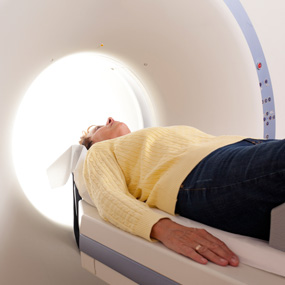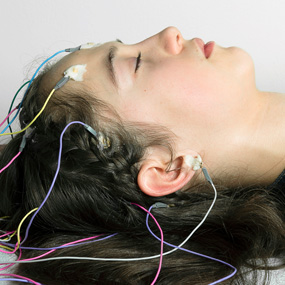

























































Who’s at Risk?
Anyone can get RRMS. It’s usually diagnosed between 20 and 50 years of age. A majority of people diagnosed with MS receive an initial diagnosis of RRMS. Some people diagnosed with RRMS will develop a more progressive form of the disease.
Up to 85% of new MS diagnoses involve a diagnosis of RRMS.
Women are two to three times more likely to be diagnosed than men.
Appropriate drug therapy can slow progression of the disease.
Obtaining an initial diagnosis of RRMS can be challenging. Many of the symptoms of an attack resemble effects caused by other illnesses or conditions. A diagnosis of RRMS requires evidence of at least two separate sites within the central nervous system where nerve damage, or lesions, have occurred.
Lesions must have developed at least one month apart. Finally, doctors must rule out other possible explanations for symptoms. MS is not the only disease that involves the destruction of myelin (demyelination).
Every patient experiences MS differently. Research suggests that the more frequently relapses occur, the more rapid the progression. RRMS progression is marked by constant symptoms and irreversible disability. Early treatment may help slow or halt this progression. As researchers noted recently: “Early is better than late treatment, but late is better than never.”
Experts now believe that treating symptoms aggressively early on is the best way to delay or prevent progression of the disease to the primary-progressive form of MS. As noted in the journal
At least a dozen medications have been approved for the treatment of RRMS. These disease-modifying agents are capable of reducing the number of relapses and new lesions. These drugs may also slow disease progression. There’s some evidence that earlier treatment leads to better long-term outcomes and less disability. Some drugs must be injected. Others are taken by mouth. Still others must be infused in a clinical setting.
Doctors also often prescribe short courses of potent, anti-inflammatory drugs to manage acute flare-ups or relapses. These may include corticosteroids such as methylprednisolone or prednisone. These drugs are not believed to offer any long-term benefits.
Treatment Side Effects
Modern drugs have transformed the treatment of MS. Many patients are now able to lead nearly normal lives thanks to targeted therapies that address some of the underlying mechanisms of the disease process. Most drugs focus on inhibiting some aspect of immune system function, so side effects related to the disruption of immune system function are common. Common side effects include:

HEADACHE : People with MS often suffer from headaches, particularly because they’re a common side effect of many MS medications, including Tysabri and Gilenya. However, if a headache is persistent, different than a typical headache, or is associated with new neurological symptoms, medical attention should be sought.
NAUSEA : Some oral medications, muscle relaxants, and immunosuppresants used to treat the symptoms of MS can trigger nausea, vomiting, and queasiness. Medications, like steroids, can affect the lining of the stomach, which may also lead to these symptoms. Certain medications can be prescribed to help protect the gut.
FLU-LIKE SYMPTOMS : Disease-modifying drugs for MS are designed to reduce the number of relapses and help with symptoms, but they can also cause flu-like symptoms including chills and fever. It’s a common side effect to interferons as well. Often these reactions will dissipate with continued treatment, but other medications, such as acetaminophen (Tylenol) and diphenhydramine (Benadryl), can also be helpful.
DIARRHEA : While less common than constipation, diarrhea is also a frequent symptom for those undergoing MS treatment. It’s a listed side effect for Tecfidera, Gileyna, Aubagio, and Lemtrada. Diarrhea generally goes away on its own. But if it persists for more than a couple of days or is associated with fever or bloody stools, medical attention should be sought immediately.
RASH : Rashes and skin irritations are temporary, but they are common side effects of some disease-modifying drugs. It’s also listed as a side effect for Avonex, Tysabri, and Tecfidera. Most rashes are transient and benign, but some rare reports of serious skin reactions have been reported. If you experience a painful rash, blister, or ulcer that spreads to the mucosal membranes of your mouth, genitals, or anus, medical attention should be sought immediately.
INFECTIONS : Certain drugs taken for MS can also suppress the immune system, and can make patients more vulnerable to infection, especially those of the urinary tract or upper respiratory tract. Signs of infection may include fever, cough, or pain with urination. Close monitoring is important to find an infection early. Prophylactic antibiotics are sometimes given to help patients manage symptoms.
FEVER : A fever is having a higher-than-normal body temperature (normal is typically 98.6 degrees Fahrenheit). It’s a short-term side effect and is often accompanied by other flu-like symptoms, including chills and muscle aches. Once an infection has been ruled out as causing the fever, your doctor may want you to take acetaminophen (Tylenol) or diphenhydramine (Benadryl) to help reduce the fever.
HAIR LOSS : Taking interferons can cause hair thinning or loss. These drugs change the hair’s texture, making it more prone to breakage. Hair loss tends to be mild and gradual. Most often, it’s reversible and the hair grows back after treatment.
THYROID DYSFUNCTION : Thyroid dysfunction or disease is a known side effect for those taking interferons. The dysfunction usually occurs within the first year of treatment, and results in an underactive thyroid (hypothyrodism). Generally, thyroid dysfunction is reversible and normalizes after the medication is stopped.
HIGH LIVER ENZYME LEVEL : Several MS medications, especially disease-modifying drugs, can affect liver function. High liver enzyme levels can be an indicator of liver damage or disease. This is often a temporary side effect at the beginning of treatment, but it should be monitored closely. The medication should be stopped if liver enzymes don’t normalize.
INJECTION SITE REDNES, SWELLING, OR PAIN : There are currently seven injectable medications for MS, all of which can cause temporary injection site reactions including redness, swelling, and pain. Rotating the injection site regularly can help avoid these complications.
LEUKOPENIA : Leukopenia is the medical term used to describe a low white blood cell count. This condition is a rare side effect related to interferon beta treatments, including Avonex, Rebif, Betaseron, and Extavia, and can range in severity. Once identified, the white blood cell count needs to be monitored routinely. You may need to discontinue the medication or therapy if it’s severe or persistent.


































HEADACHE : People with MS often suffer from headaches, particularly because they’re a common side effect of many MS medications, including Tysabri and Gilenya. However, if a headache is persistent, different than a typical headache, or is associated with new neurological symptoms, medical attention should be sought.



FEVER : A fever is having a higher-than-normal body temperature (normal is typically 98.6 degrees Fahrenheit). It’s a short-term side effect and is often accompanied by other flu-like symptoms, including chills and muscle aches. Once an infection has been ruled out as causing the fever, your doctor may want you to take acetaminophen (Tylenol) or diphenhydramine (Benadryl) to help reduce the fever.


NAUSEA : Some oral medications, muscle relaxants, and immunosuppressants used to treat the symptoms of MS can trigger nausea, vomiting, and queasiness. Medications, like steroids, can affect the lining of the stomach, which may also lead to these symptoms. Certain medications can be prescribed to help protect the gut.



HAIR LOSS : Taking interferons can cause hair thinning or loss. These drugs change the hair’s texture, making it more prone to breakage. Hair loss tends to be mild and gradual. Most often, it’s reversible and the hair grows back after treatment.


FLU-LIKE SYMPTOMS : Disease-modifying drugs for MS are designed to reduce the number of relapses and help with symptoms, but they can also cause flu-like symptoms including chills and fever. It’s a common side effect to interferons as well. Often these reactions will dissipate with continued treatment, but other medications, such as acetaminophen (Tylenol) and diphenhydramine (Benadryl), can also be helpful.


THYROID DYSFUNCTION : Thyroid dysfunction or disease is a known side effect for those taking interferons. The dysfunction usually occurs within the first year of treatment, and results in an underactive thyroid (hypothyrodism). Generally, thyroid dysfunction is reversible and normalizes after the medication is stopped.



DIARRHEA : While less common than constipation, diarrhea is also a frequent symptom for those undergoing MS treatment. It’s a listed side effect for Tecfidera, Gileyna, Aubagio, and Lemtrada. Diarrhea generally goes away on its own. But if it persists for more than a couple of days or is associated with fever or bloody stools, medical attention should be sought immediately.



HIGH LIVER ENZYME LEVEL : Several MS medications, especially disease-modifying drugs, can affect liver function. High liver enzyme levels can be an indicator of liver damage or disease. This is often a temporary side effect at the beginning of treatment, but it should be monitored closely. The medication should be stopped if liver enzymes don’t normalize.



RASH : Rashes and skin irritations are temporary, but they are common side effects of some disease-modifying drugs. It’s also listed as a side effect for Avonex, Tysabri, and Tecfidera. Most rashes are transient and benign, but some rare reports of serious skin reactions have been reported. If you experience a painful rash, blister, or ulcer that spreads to the mucosal membranes of your mouth, genitals, or anus, medical attention should be sought immediately.


INJECTION SITE REDNES, SWELLING, OR PAIN : There are currently seven injectable medications for MS, all of which can cause temporary injection site reactions including redness, swelling, and pain. Rotating the injection site regularly can help avoid these complications.


INFECTIONS : Certain drugs taken for MS can also suppress the immune system, and can make patients more vulnerable to infection, especially those of the urinary tract or upper respiratory tract. Signs of infection may include fever, cough, or pain with urination. Close monitoring is important to find an infection early. Prophylactic antibiotics are sometimes given to help patients manage symptoms.



LEUKOPENIA : Leukopenia is the medical term used to describe a low white blood cell count. This condition is a rare side effect related to interferon beta treatments, including Avonex, Rebif, Betaseron, and Extavia, and can range in severity. Once identified, the white blood cell count needs to be monitored routinely. You may need to discontinue the medication or therapy if it’s severe or persistent.



A rehabilitation program may be recommended for patients living with RRMS. The goal is to keep or restore abilities that are necessary for daily living. Rehabilitation can help patients get “back on track” after an acute relapse. Depending on a patient’s unique situation, any number of clinical specialists may be involved. Services involved may include:
Physical therapy
Occupational therapy
Language/ speech pathology
Cognitive therapy
A wide variety of medications and therapies may be helpful, at times, to address various symptoms of MS. These treatments don’t alter the course of the disease. They merely help alleviate certain symptoms, such as bladder control problems, sexual dysfunction, fatigue, depression, spasticity, bowel dysfunction, tremors, pain, and dizziness.
There’s no current cure for MS. Modern drugs may slow the progression of the disease, but eventually
Experts note that it’s crucial for patients to cooperate with their doctors to treat the disease, minimize symptoms, and manage side effects. Experts now think slowing the progression of the disease works best when treatment is started early. Thanks to modern therapies, many people are able to lead normal or near-normal lives through careful monitoring and appropriate treatments and support.









































